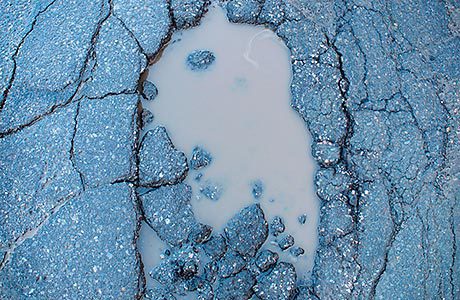
THE exceptional winter storms encountered in the UK this year have contributed to an increase in the incidence of sinkholes and landslides, according to the British Geological Survey (BGS). The Met Office has confirmed that this winter has been one of, if not the most, exceptional periods of winter rainfall in at least 248 years.
This sustained period of wet weather, and its channelling of the water through our drainage systems (from Dec 2013 to February 2014) are the main triggers for the recent spate of natural sinkholes, collapse subsidence features (developed from the influence of man e.g. mining activities), landslides and engineered slope failures that have been reported in the south and south-east of the UK. These processes occur during and after periods of high rainfall because the water is saturating and infiltrating into ground causing the soil and rock to lose strength and the soluble rocks (e.g. chalk, limestone, gypsum or salt) to dissolve forming cavities underground.
The rainfall total for December and January was 372.2mm for the southeast and central southern England region, which was the wettest two-month period in Met Office records since 1910. As a consequence there has been an increase in the number of natural sinkholes and collapse subsidence features reported in February, 18 compared to a long term average of two per month. For landslides and engineered slope failures 32 events have been recorded by the BGS in February 2014 compared to the normal monthly observed average of five.
It is important to remember that man-made activities have also contributed to these events, says the BGS. For example eight of the recent events are collapse subsidence features which can be attributed to previous mining activity. Natural sinkholes, collapse subsidence features, landslides and slope failures, which are often sudden and unpredictable, can have a major impact causing destruction, disruption and can lead to unquantifiable economic damage to infrastructure, buildings and local communities.






